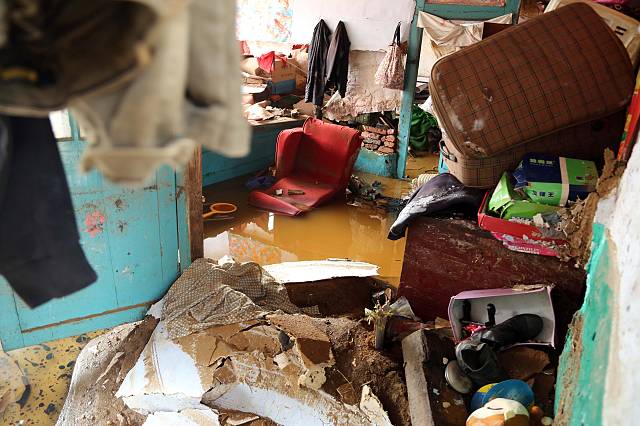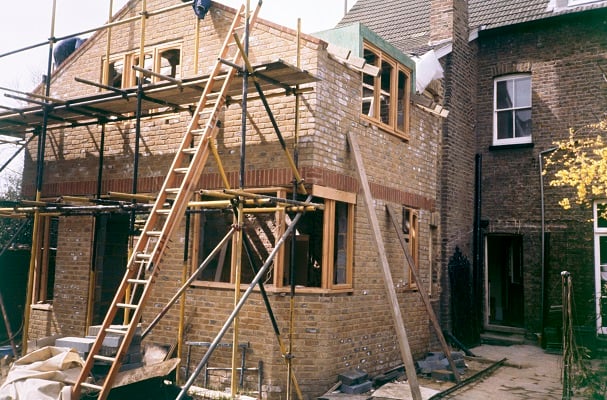When it comes to maintaining older properties, one of the biggest challenges homeowners face is managing damp. Many people wonder if they can install a damp proof course (DPC) in an old house. This article dives into the essentials of damp proofing, especially for period properties, helping you understand the importance of a DPC and the various methods available.
Damp proof course: What you need to know
A damp proof course is a barrier that prevents moisture from rising through the walls of a property. It’s essential for keeping dampness at bay, which can lead to mould and other damp-related issues. In older homes, the need for a damp proofing solution becomes even more critical, as rising damp can compromise the structural integrity of the building. Understanding the purpose of a DPC is key for homeowners looking to preserve their historic properties while ensuring they remain comfortable and safe.
Definition and purpose of damp proofing
Damp proofing refers to methods used to prevent moisture from penetrating the walls and floors of a property. In essence, the purpose of a damp proof course is to create a barrier that stops water from rising through the brick or mortar. This is particularly important in older buildings where the original damp proofing may have failed, leading to issues like damp patches and condensation. A well-installed DPC can significantly enhance property care, keeping your home dry and free of damp problems.
Importance of a damp proof course in old houses
In older houses, the risks associated with damp are heightened due to the age of the materials used, such as lime mortar and slate. These materials can absorb moisture, leading to rising damp and other forms of dampness. Installing a damp proof course not only helps protect the integrity of the property but also improves the overall living environment by reducing mould growth and enhancing ventilation. Consulting a property restoration specialist can ensure that any damp-related problems are thoroughly assessed and addressed with long-term, effective solutions. A professional damp proofing specialist can diagnose damp issues and recommend the best course of action for your unique situation.
Common types of damp proof courses
There are several types of damp proof courses available for old homes, each designed to tackle specific damp problems. Chemical DPCS involve injecting a waterproofing solution into the wall, while physical DPCS can be installed during restoration projects. Additionally, cavity wall insulation can help prevent penetrating damp. Understanding these options can empower homeowners to make informed decisions about damp proofing their period properties, ensuring a long-lasting solution to damp in an old house.
Understanding damp in old houses
Identifying signs of dampness in period properties
When living in an old house, being vigilant about signs of dampness is crucial. Look for damp patches on walls, especially in corners or behind furniture. You might also notice peeling plaster or a musty smell, which are clear indicators of rising damp. If you see mould developing on external walls or even within the interior, it’s a telltale sign that damp is an issue. Regular inspections can help catch these damp problems early, ensuring your property remains a healthy environment.
Common causes of damp in older properties
The causes of damp in older properties can be quite varied. Often, it stems from inadequate ventilation or poor drainage around the property, leading to water pooling at ground level. Crumbling mortar and old slate roofs can also allow moisture to seep in. Other factors include blocked gutters, which can cause water to overflow and penetrate walls. Understanding these causes of damp is essential for effective property care, as it enables homeowners to implement preventative measures and seek the right damp proofing solutions.
Types of dampness: Rising damp vs. condensation
Damp in an old house typically manifests as either rising damp or condensation. Rising damp occurs when moisture travels from the ground through the walls, often affecting the lower part of the building. On the other hand, condensation is caused by warm, moist air hitting cold surfaces, leading to damp patches and mould growth. Both forms of damp require different approaches for diagnosis and management. A damp specialist can help identify which type is affecting your property, ensuring you get the right damp proofing treatment.
The role of a surveyor in managing damp issues
Why you should hire a chartered surveyor
Hiring a chartered surveyor is a wise decision when dealing with damp issues in period properties. These professionals are trained to conduct thorough damp surveys, identifying the root causes of damp problems. They can also assess the condition of building materials like brick and mortar, giving you a complete picture of your home’s health. A surveyor’s expertise is invaluable, ensuring that any damp proofing measures you take are effective and tailored to your specific property needs.
What to expect during a building survey
During a building survey, you can expect a comprehensive evaluation of your property, focusing on signs of dampness and other potential issues. The surveyor will inspect external walls, assess the condition of the roof, check for adequate ventilation, and even look at the ground level around your home. This detailed analysis helps identify areas at risk of moisture ingress, allowing for informed decisions about damp proofing solutions. Knowing what to expect can help you feel more prepared and involved in the property care process.
How a surveyor can recommend damp proofing solutions
A qualified surveyor can provide crucial recommendations for effective damp proofing solutions once they diagnose damp issues. They will suggest appropriate methods, such as installing a chemical DPC or enhancing ventilation to combat condensation. By understanding the specific type of damp affecting your property, a surveyor can guide you on the best course of action, whether that involves professional treatments or DIY fixes. This tailored approach ensures that your old house remains dry and comfortable for years to come.
Damp proofing solutions for old buildings
Choosing the right damp proofing method for your property
When it comes to choosing the right damp proofing method for your property, it’s essential to consider the specific needs of your old house. Whether you deal with rising damp, penetrating damp, or condensation, the solution can vary. For instance, if your building has a history of damp issues, a chemical DPC might be the best option. On the other hand, if your property is undergoing restoration, a physical damp proof course could be installed to enhance moisture protection. Understanding the unique characteristics of your building can guide you in selecting the most effective damp proofing method.
Hiring damp proofing companies: What to consider
Hiring a damp proofing company is a crucial step in managing damp issues effectively. You should look for companies that specialise in damp proofing old houses and have a solid reputation in the industry. It’s wise to check their qualifications, such as membership in the Property Care Association, which ensures they adhere to industry standards. Additionally, reading reviews and asking for references can provide insights into their past work. A good damp proofing specialist will also offer a detailed survey, diagnosing any damp problems before suggesting the most suitable solution for your period property.
Long-term management of damp problems in old homes
Long-term management of damp problems in old homes requires a proactive approach. Regular maintenance, such as clearing gutters and ensuring proper ventilation, can prevent moisture build-up that leads to dampness. It’s also vital to conduct periodic damp surveys to identify any emerging issues early on. Keeping an eye on the condition of external walls and the integrity of materials like mortar and plaster is essential. By staying vigilant and addressing potential damp issues promptly, you can ensure your old house remains a comfortable and safe living space.
Conclusion: The importance of addressing dampness in old properties
Final thoughts on damp proofing in period properties
Addressing dampness in period properties is not just about aesthetics; it’s crucial for preserving the structural integrity of the building. A damp proof course, when properly installed, protects against rising damp and other forms of dampness that can lead to significant damage. Investing in the right damp proofing solutions ensures your property remains livable and retains its historic charm. Remember, damp problems can escalate quickly, so early intervention is key to effective property care.
Resources for homeowners facing damp issues
Homeowners facing damp issues have access to several resources to help them navigate the complexities of damp proofing. From local building surveyors who can conduct thorough damp surveys to online forums where you can connect with other homeowners, support is available. Websites of reputable damp proofing companies often provide valuable information on solutions and preventative measures. Engaging with professionals experienced in managing damp in old houses can provide peace of mind as you tackle these challenges.
Future considerations for property maintenance
Looking ahead, property maintenance should always include consideration for damp management. As weather patterns change and extremes in temperature become more common, older properties may be at greater risk of damp issues. Regular inspections and maintenance of external walls, roofs, and drainage systems will be essential in preventing damp problems. Additionally, staying informed about new damp proofing technologies and methods can help you make smarter choices for your old house, ensuring its longevity and comfort for future generations.






Leave a Comment